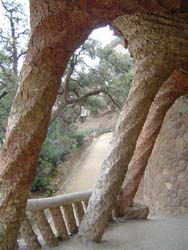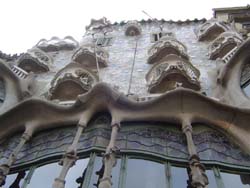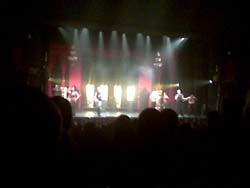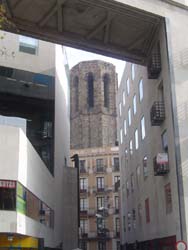Posted: February 16th, 2004 | No Comments »
A few terms from Nicolas Nova‘s Locative Media: a literature review:
Awarness: the understanding of other’s person’s interaction with a shared workspace.
The awarness tool: The lack of information about the geographically-dispersed partners is addressed by providing users with tools that try to “recreate the information landscape of a real-world landscape
Locative media: every information about the physical location as well as other contextual cues. It can be decomposed into three awarness components: presence, location and direction.
Read the rest of this entry »
Posted: February 16th, 2004 | No Comments »
Because a university contains the 3T’s of creative places – technology, talent and tolerance.
Technology: Universities are centers for cutting-edge research in fields from sotware to biotechnology and important sources of new technologies.
Talent: Universities are amazingly effective talent attractors.
Tolerance: Universities aslo help to create a progressive, open and tolerant people climate that helps attract and retain members of the Creative Class.
Posted: February 15th, 2004 | 1 Comment »
As creativity has come to be valued and systems have evolved to encourage and harness it, a new social class is rising. The so-called Creative Class as defined by Richard Florida in his book The Rise of the Creative Class. I skipped the part on the Creative Economy, but I was more interested in the social definition of the members of the Creative Class. A few notes:
The core of the Creative Class include people in science and engineering, architecture and design, education, arts, music and entertainment, whose economic function is to create new ideas, new technologies and/or new creative content.
Read the rest of this entry »
Posted: February 15th, 2004 | No Comments »
The Koala XML serialization provides an easy way to serialize and deserialize any Java Objets in an XML document. This application is called KOML for Koala Object Markup Language. To be used next time I want my Java serialized object to be interoperable with other application, like in the Portalvisualizer where my Java visualization that created and used serialized objects could have interoperate with the PHP/SVG visualization developped by Patrick.
Posted: February 15th, 2004 | No Comments »
Future Now is a quality blog on emerging technologies and their social implications. It was pointed to me by icon.
Posted: February 14th, 2004 | No Comments »
The Access in Distance Education website, has been designed to “meet the needs of faculty teaching students with disabilities in the online environment.” Based in the Office of Distance Education and Lifelong Learning at the University of Maryland, the site both explains accessibility problems that may be faced by students with disabilities and also helps them develop solutions within their course websites.
Posted: February 13th, 2004 | No Comments »
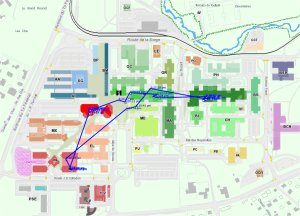 Friday at CRAFT is “bidouille” day. My access point sniffing software for iPAQ 5550 finally delievered viewable outputs. Localization is done with a very cheap algorithm using the location of the room hosting the reachable access points. From this, I could, for example, trace a small walk on the EPFL campus. This development is part of the researches @ CRAFT.
Friday at CRAFT is “bidouille” day. My access point sniffing software for iPAQ 5550 finally delievered viewable outputs. Localization is done with a very cheap algorithm using the location of the room hosting the reachable access points. From this, I could, for example, trace a small walk on the EPFL campus. This development is part of the researches @ CRAFT.
Posted: February 11th, 2004 | No Comments »
The upcoming semester, I will attend the Human-Computer Interaction course given by Dr. Pearl Pu at the EPFL.
Posted: February 3rd, 2004 | No Comments »
From siliconvalley.com about 53 percent of all electronic mail circulated within the 15 EU nations is spam. About 80 percent of those messages claim North America as their point of origin.


